The representative skull is wide with good development, though not overly amplified and the skull and forehead are about the same length. The forehead and skull should be parallel to each other. The stop should be moderate, while the brow is barely pronounced making the skull slightly out of line with the nose. The brow ridges should help describe the stop. The cheeks shouldn't be fleshy. The skull's bone structure should be incised under the eye. The mature dog's occipital bone shouldn't stand out. Squared lips or hanging ones should lead curve-like to the throat.
The head that is wedge like or has too much length and the muzzle is overly thin isn't correct. The back skull is incorrect, if too tapered. Huge heads are incorrect. The muzzle is wrong, if it is too short or too long.
The dog's nose should be ample and have good development of the nostrils. Chocolate dog's noses are brown and yellow dog's noses are black with black when correct. If a nose graduates to a lighter shade it is okay, but a completely pink nose or total lack of pigment is a disqualification.
The scissors bite of the dog's teeth have to be regular and the teeth healthy and solid. The bottom teeth are recessed a bit, though setting against the inner side of the top teeth. An even bite well pass, but teeth recessed too far or an over bite or not in alignment is a big fault. A complete set of teeth is the preference and lacking molars, even pre-molars is a big problem.
The ears should be fairly close to the head and positioned to the back of the head and riding a little low on the head, though a bit higher than eye level. The ears should have congruity to the head being in balance. If drawn forward the ears should touch the eye's inside.
The eyes shouldn't bulge out or be deeply inset. The eyes should impart a good personality, a companionable attitude, attentiveness, and intelligence. The eyes size needs to be typical, and positioned adequately apart. Chocolate Labs should have hazel or brown eyes and yellow or black ones need brown eyes. Black and yellow eyes are not wanted. Little eyes, those closely knit, and round shooting out ones aren't wanted. No pigmentation on eyes rims disqualifies.
The neck's length should be proportioned for reaching game with ease. A well muscled neck, but throatiness isn't desired. The neck's preferred arch is moderate with a strong rise off the shoulders. The chunky neck is unsuitable. The back is well-made with a level top-line ranging from the withers, ending on the croup, while standing or in movement. A flexible and athletic loin is desired.
The Lab's body should be coupled short. A good bounce of ribs should taper into a somewhat wide chest; a narrow chest isn't desirable, which appears to be hollow between the dog's front legs. The front shouldn't be overly wide. The forelimb should move unhindered because the taper of the front legs is correct. This is achieved from the chest having the right conformation. If the width of the chest is
either overly wide or too narrow it is incorrect. These deficiencies deter proper movement and energy. The barrel-chest and rotundness are undesirable. The underline is continuous with little curve, if dog is mature. Short, broad, and solid loins that go into well formed strong hindquarters is wanted. The side-view should portray a nice development though not excessive fore chest.
The tail is the outstanding attribute of the Lab. The base needs to be thick with a fine tapering approaching the tip. The correct length is medium, which shouldn't overshoot the hock. The tail should have a short and thick coat. It shouldn't appear like fringe. It should look very round picturing the special "otter" tail Labs are known for. Curling over the back is undesirable. Big tail faults are lengthy, thin tails and very short ones. The tail should conform to the top-line, whether reposing or moving. The tail embodies the Lab's balance making its line flow from the head to the tail's end. Any alteration of the tail is a disqualification.
The forequarters should be in sync with the hindquarters, nicely balanced. Good muscle and coordination are desired. The shoulders goodly set back, lengthy, nicely sloped making a 90 degree angle allowing the dog's forelegs to move easily having a powerful reach frontward. The shoulder blade and upper arm are of same length, if perfect. Any characteristic that thwarts free mobility is incorrect.
Frontal view of the front legs should show them straight with powerful bone structure. Unwanted leg traits: too boney, not enough bone, too short, and too heavy. These traits aren't the norm. From the side, the elbows are set right under the withers, with front legs at right angles of ground, sitting well beneath the body. The elbows are closely knit to against the ribs, not loose. Big elbow faults are those tied-in and those sticking out, as moving is restrained. Powerful and short pasterns are desired, sloping a little from aslant leg line. Powerful and solid feet with good arch of toes and pads developed well. Dew claws can be detached. Big flaws for feet are: turned in feet, turned out, knuckling, hare feet, and squat feet.
The Lab's hindquarters are wide, muscled, and well formed from hip to hock. Stifles are turned well and hocks are powerful and short. The back view shows straight and parallel back legs. The side view shows the back legs in balance to front. Powerful bones, good muscles, and angled moderately at stifle. Thighs are strong and very defined. The patellae doesn't have slippage when moving or standing. The strong hocks, go down, don't slip, no hyper-extension, when moving or standing. The maximum balance for drive and traction should be actualized from the angle of the hock and stifle. The hind toes should be barely rear to the rump's point, if standing. If top-line slopes, it is atypical of a Lab. This is produced by too much angulation. Powerful and solid feet with good arch of toes and pads developed well. These will be faulted: cow, spread, and sickle hocks or too much angulation. They are crucial structural flaws.

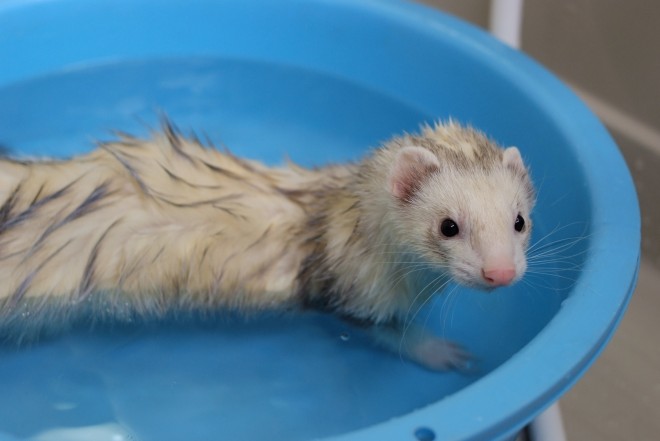 Bathing Your Pet Ferret
Bathing Your Pet Ferret
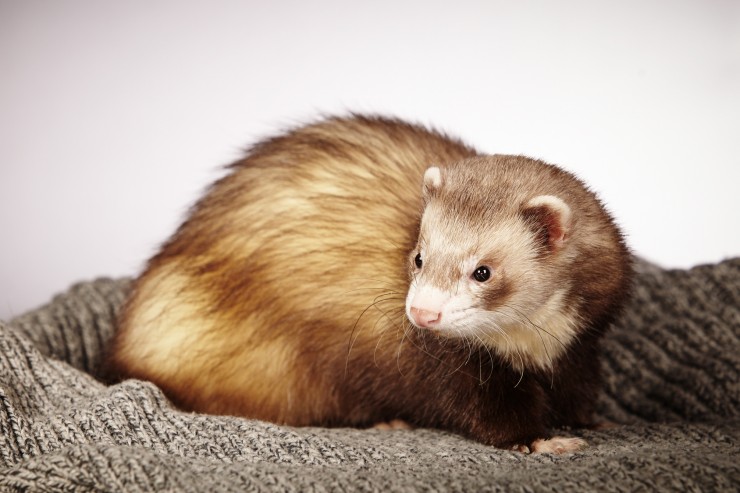 Adrenal Disease In Ferrets Explained
Adrenal Disease In Ferrets Explained
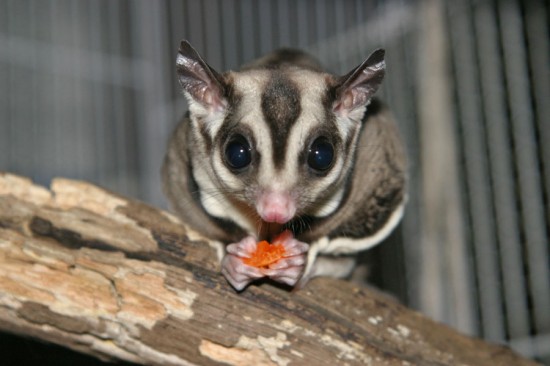 Sugar Gliders - What Are They And Do I Want One As A Pet?
Sugar Gliders - What Are They And Do I Want One As A Pet?
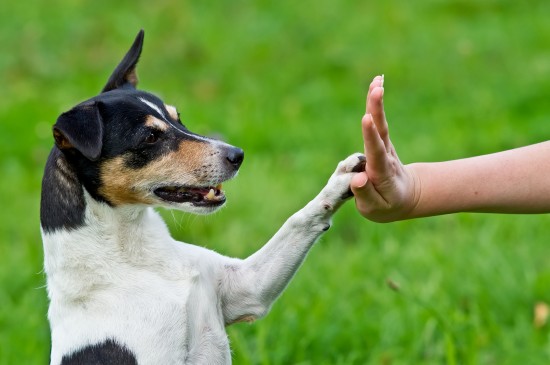 Canine Communication - Three Ways In Which You Might Be Doing Your Dog A Disservice
Canine Communication - Three Ways In Which You Might Be Doing Your Dog A Disservice
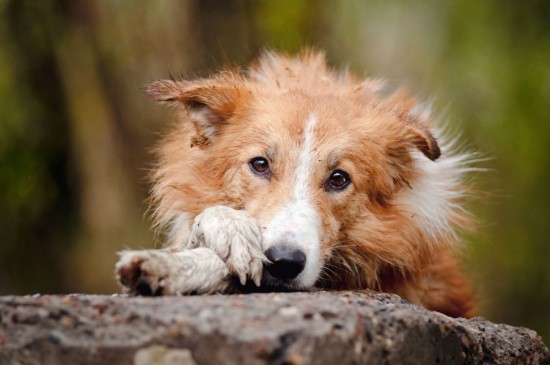 What To Do If You Suspect That An Animal Is Being Mistreated
What To Do If You Suspect That An Animal Is Being Mistreated
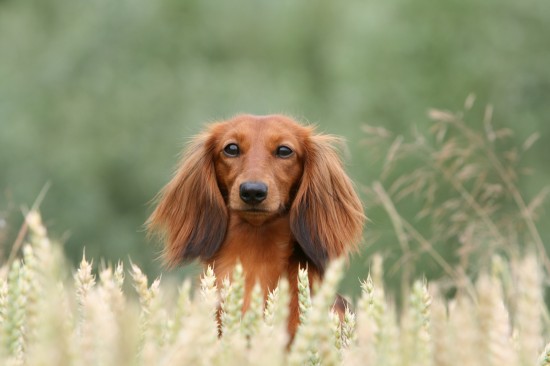 Fibre, Grains And Fillers - What Does Your Dog Need?
Fibre, Grains And Fillers - What Does Your Dog Need?